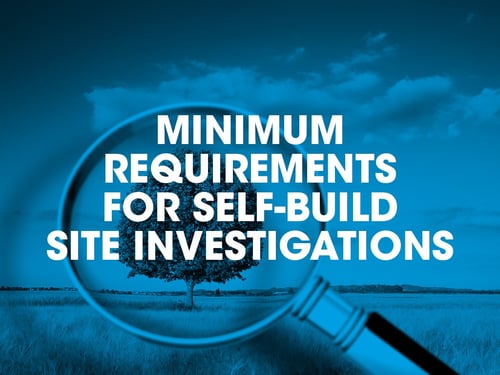Why our requirements differ from Building Regulation requirements
The Building Regulations are statutory requirements which need to be satisfied by the developer or builder and the authorised building control body involved inspecting their work. The Building Regulation ‘requirements’ are the minimum standards which need to be achieved in this country and are intended to protect people’s safety, health and welfare. These minimum standards are, on the whole, derived from building failures.
Warranty technical requirements whilst generally are founded on the Building Regulations, go into greater depth due to claims history and causation experience. This is why we often have greater requirements compared to Building Regulation Requirements. In addition, the building control surveyor is interested mainly in compliance on the day that they visit, or at the time that a completion certificate is issued. Warranty surveyors are generally required to consider the performance on an ongoing basis for at least the life of the warranty cover and beyond.
What we require for self-build projects
As a minimum, we would require a 3m trial hole to be dug and witnessed by a project structural or geotechnical engineer. The project engineer would need to provide commentary on the ground conditions and its suitability for the project proposals.
The project engineer should also provide a design for the foundations, ground floor and drainage in relation to the ground conditions.
We would also expect a Phase One Geoenvironmental Assessment to be carried out; the aim of which is to identify and assess the potential geotechnical and geoenvironmental (contamination) hazards on the site based on online data, records and databases.
The project structural engineer should also provide commentary on the Phase One Geoenvironmental Assessment and the suitability of the ground conditions for the projects proposals. If the Phase One Geoenvironmental Assessment flags up any potential issues with the ground conditions (for example such as solution features in chalk) then further investigations may be required.
Piled foundations
For piled foundations, we would require a detailed, site specific, interpretive, Phase Two Geotechnical Site Investigation. It should in accordance with BS 5930 / BS EN1997-2 and extend to depths beneath the pile toe of at least three x pile diameter or 5m or the smallest plan dimension encompassing the pile group (whichever is the greatest).
Refer to ‘Published Minimum Requirements for Site Investigation’ by the Federation of Piling Specialists (July 2013).
Generally, boreholes should be at centres of 10m to 30m for structures and at a minimum of three points, but closer borehole spacing’s should be used where there are site-specific hazards (e.g. soluble soils, mining features etc.) or where there are large variations in soil properties.
The investigation should include sufficient geotechnical testing throughout the length and beneath the pile to enable an accurate geotechnical design of the pile in accordance with proven design methods.
If the site investigation is found to contain insufficient information to verify the proposed design of the piles, the pile designer should request additional investigation and testing e.g. additional boreholes to the above depth, as considered necessary to establish the required geotechnical parameters.
Please note, all of the above requirements are for self-build projects only.
Warranty position
In summary we would require the following with regards to site investigations for self-build projects:
- 3m trial hole dug and witnessed by the project structural or geotechnical engineer
- A Phase One Geoenvironmental Assessment
- A design by the project structural engineer with regards to the foundations, ground floor and drainage.
The project structural engineer should provide commentary on the suitability of the ground conditions based on the findings from the 3m trial hole and the Phase One Geoenvironmental Assessment.
For piled foundations, we would require a detailed, site specific, interpretive, Phase Two Geotechnical Site Investigation. It should in accordance with BS 5930 / BS EN1997-2 and extend to depths beneath the pile toe of at least three x pile diameter or 5m or the smallest plan dimension encompassing the pile group (whichever is the greatest).

